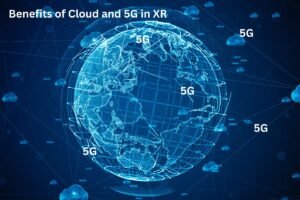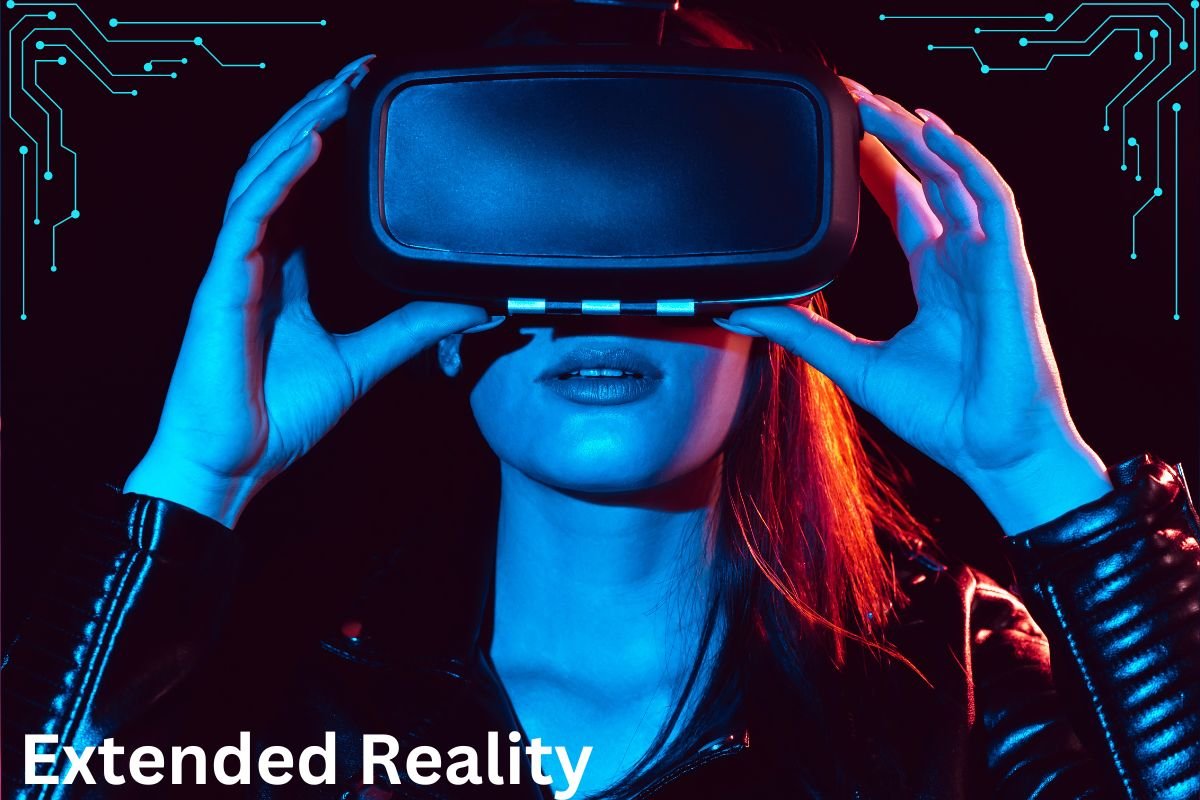Cloud and 5G in Extended Reality
Transforming Immersive Experiences
Extended Reality (XR) is revolutionizing the way we perceive and interact with the digital world, seamlessly blending virtual environments with the physical realm. At the heart of this transformation lie two crucial technologies: cloud computing and 5G connectivity. In this article, we delve into the symbiotic relationship between cloud, 5G, and XR, exploring their synergies, applications, and future prospects.

Understanding Cloud Computing
Definition and Basics
Cloud computing refers to the delivery of computing services—such as storage, processing power, and applications—over the internet on a pay-as-you-go basis. Instead of relying on local hardware and infrastructure, users can access resources remotely from cloud service providers.
Role in Extended Reality
In the realm of XR, cloud computing serves as the backbone that powers immersive experiences. By offloading intensive computational tasks to remote servers, cloud-based XR applications can deliver high-fidelity graphics, complex simulations, and real-time interactions without overburdening local devices.
The Significance of 5G in XR
Introduction to 5G Technology

5G represents the fifth generation of mobile network technology, offering significantly faster data speeds, lower latency, and greater capacity compared to its predecessors. With speeds reaching up to 100 times faster than 4G, 5G enables seamless connectivity and supports a myriad of innovative applications, including XR.
Impact on Extended Reality Experiences
The low latency and high bandwidth of 5G networks are paramount for delivering immersive XR experiences. From ultra-responsive virtual environments to high-definition augmented reality overlays, 5G facilitates fluid interactions and enables real-time collaboration, unlocking new possibilities for entertainment, communication, and productivity.
Cloud-Based XR Applications
Cloud and 5G technologies converge to enable a wide array of XR applications, including:
- Virtual Reality (VR): Immersive simulations and interactive experiences that transport users to virtual environments.
- Augmented Reality (AR): Overlaying digital content onto the real world, enhancing perception and interaction.
- Mixed Reality (MR): Blending virtual and physical elements seamlessly, creating hybrid environments for gaming, education, and enterprise applications.
Benefits of Cloud and 5G in XR

The integration of cloud computing and 5G connectivity brings forth several advantages for XR:
- Enhanced Performance and Scalability: Cloud-based XR applications can leverage powerful remote servers to deliver superior performance and scalability, catering to diverse user demands and scenarios.
- Improved Accessibility and Mobility: With 5G’s widespread coverage and low latency, XR experiences become more accessible and mobile, enabling users to immerse themselves in virtual worlds anytime, anywhere.
- Real-Time Interactivity: The combination of cloud computing and 5G enables real-time interactions and collaborative experiences in XR, fostering engagement and innovation across various domains.
Challenges and Solutions
Despite their potential, cloud and 5G technologies also pose challenges for XR adoption, including:
- Bandwidth and Latency Issues: The bandwidth requirements of immersive XR content and the latency introduced by network communication can impact the user experience. However, advancements in 5G infrastructure and edge computing mitigate these challenges by reducing latency and optimizing data transmission.
- Security Concerns: Storing sensitive XR data in the cloud raises security concerns regarding data privacy and protection. Encryption, authentication mechanisms, and secure protocols help address these concerns, ensuring the confidentiality and integrity of XR content.
- Integration and Compatibility: Integrating cloud-based XR applications with existing infrastructure and devices requires seamless compatibility and interoperability. Standardization efforts and cross-platform development frameworks streamline integration, enabling seamless experiences across devices and ecosystems.
Future Trends
Looking ahead, the future of XR with cloud and 5G is ripe with possibilities:
- Advancements in Cloud Infrastructure: Continued advancements in cloud technologies, such as edge computing and serverless architectures, will further enhance the performance, reliability, and scalability of XR applications.
- Evolution of 5G Networks: The rollout of standalone 5G networks and the deployment of advanced features like network slicing and edge computing will unlock new use cases and elevate the immersive capabilities of XR.
- Innovation in XR Technologies: Ongoing innovation in XR hardware, software, and content creation tools will drive the evolution of immersive experiences, catering to diverse industries and user preferences.
Industry Applications
Cloud and 5G-powered XR finds applications across various industries, including:
- Entertainment and Gaming: From immersive gaming experiences to interactive storytelling, cloud-based XR revolutionizes entertainment by blurring the lines between the virtual and real worlds.
- Education and Training: XR technologies facilitate immersive learning experiences, allowing students to explore virtual environments, conduct experiments, and engage in collaborative activities.
- Healthcare and Medicine: Cloud and 5G-enabled XR applications support medical training, surgical simulations, and telemedicine, improving patient care, training outcomes, and procedural efficiency.
Conclusion
In conclusion, the convergence of cloud computing, 5G connectivity, and extended reality heralds a new era of immersive experiences and transformative applications. By harnessing the power of cloud-based computing and high-speed connectivity, XR not only redefines how we interact with digital content but also unlocks unprecedented opportunities for innovation, collaboration, and exploration. As technology continues to evolve, the synergy between cloud, 5G, and XR will shape the future of entertainment, education, healthcare, and beyond.
Unique FAQs
- How does cloud computing enhance XR experiences?
- Cloud computing offloads intensive computational tasks, enabling high-fidelity graphics and real-time interactions in XR applications.
- What role does 5G play in augmented reality (AR)?
- 5G’s low latency and high bandwidth facilitate seamless AR experiences, enabling real-time overlays and interactive content.
- What are some security measures for cloud-based XR applications?
- Encryption, authentication mechanisms, and secure protocols safeguard sensitive XR data stored in the cloud.
- How does 5G address latency challenges in XR?
- 5G’s low latency and edge computing capabilities minimize delays, ensuring responsive XR interactions and immersive experiences.
- What industries benefit most from cloud and 5G-powered XR?
- Entertainment, gaming, education, healthcare, and enterprise sectors leverage cloud and 5G-enabled XR for immersive experiences, training simulations, and collaborative applications.

Hi there
My name is Diana Rossenga and I represent Musgrave Group, Ireland’s largest wholesaler. We’re always on the lookout for fresh opportunities that can help expand our offerings while promoting quality products from other companies around the globe.
We find your product line quite impressive and believe it aligns perfectly with our business model.
I’ve been trying to locate your export department with no luck yet. Can you pass this message to your CEO or Export dep.
Mrs Diana Rossenga
Musgrave Group
Cork,
Ireland
Email: bookings@musgraveimports.com